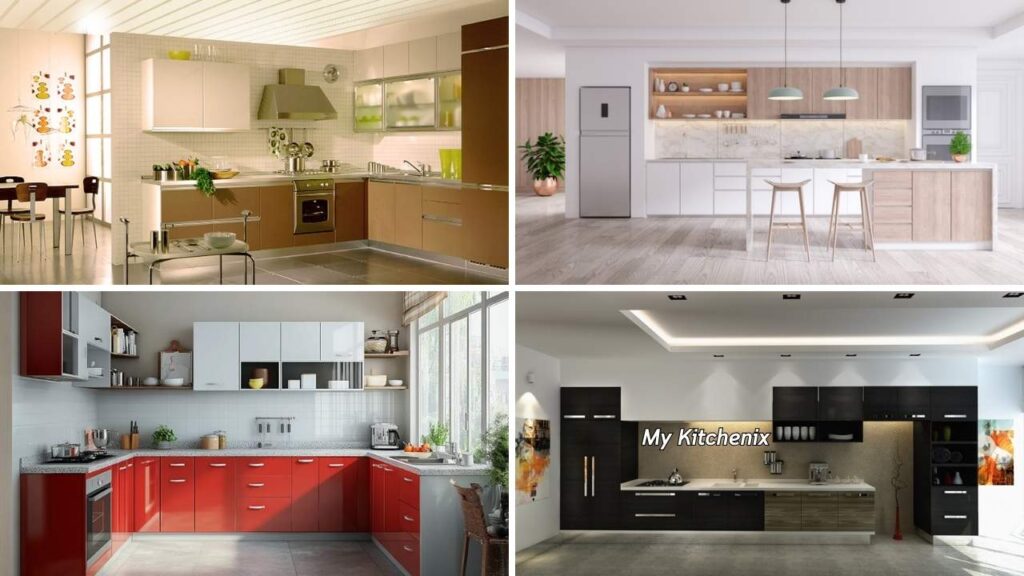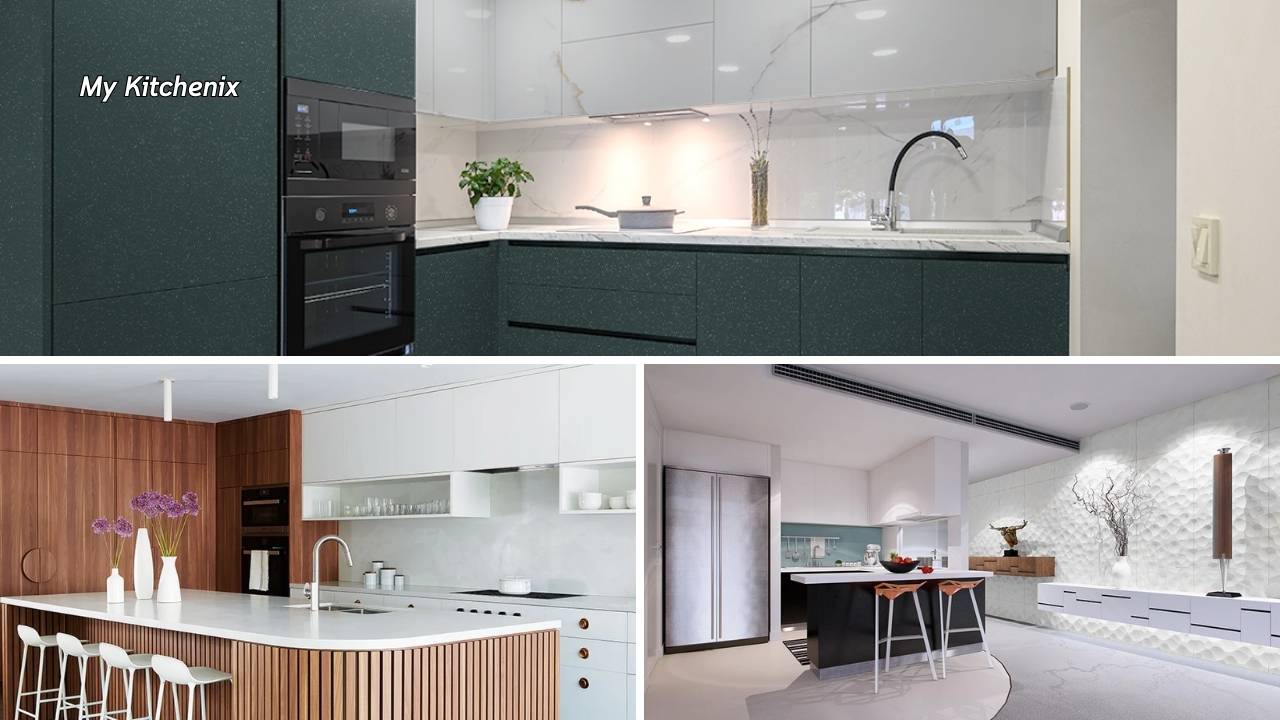When designing or renovating your kitchen, every little element counts. PVC wall panels are one essential component that could improve the appearance and use of your room. This contemporary material has various useful qualities in addition to a clean and fashionable appearance. This post will go over what PVC wall paneling is, its benefits, installation advice, and how it may turn your kitchen into a lovely and effective cooking space.

What is PVC Wall Paneling?
Made from polyvinyl chloride, a material well-known for its dependability and adaptability, PVC wall paneling Different styles, colors, and textures of these panels let homeowners pick choices that complement their personal taste. PVC is resistant to moisture unlike conventional wood or drywall, hence it’s a great alternative for kitchens where spills and humidity are typical. Both do-it-yourselfers and professional builders find this material to be lightweight and straightforward to install.
Benefits of PVC Wall Paneling
The resistance to moisture and mildew of PVC wall paneling is among its main advantages. This is quite important in a kitchen, where dampness and water are somewhat common. PVC panels keep their pristine look by not absorbing water, thereby reducing damage. They also repel stains, hence cleaning is easy. They appear as good as new after just a quick clean with a moist towel. These lightweight panels help save installation time and labor expenses, therefore saving you both effort and money.
Aesthetic Versatility
Amazing aesthetic adaptability of PVC wall panels lets you design the kitchen of your fantasies. You can get whatever appearance you want with the vast array of colors, designs, and textures at hand. There is a PVC alternative for you whether your taste is for a rustic wood look or a slick modern finish. This adaptability allows you to quickly match your flooring, countertops, cabinets, and wall paneling to your cabinets, thereby producing a unified look across your kitchen. Moreover, the flexibility to add moldings and artistic trimmings improves the whole feel and appearance of your room.
Installation Process for PVC Wall Paneling
Many homes’ owners may easily install PVC wall paneling on their own. Starting with the wall surface, make sure it is smooth, dry, and clean. After figuring out the panel count from the area, trim the panels to fit using a utility knife or saw. To guarantee the panels are placed correctly, fasten them to the wall with sturdy glue or paneling nails. Add any required trim or molding last to give the appearance polished. Your kitchen will look great in a little time and effort.
Maintenance Tips for PVC Wall Paneling
Low maintenance needs of PVC wall panels are one of its key benefits. Regular cleaning is quite important if you want your panels to appear their best. To get any dirt or grease, just gently wash them down using a soft cloth and a light soap solution. Steer clear of abrasive cleansers or strong chemicals as these could harm the surface. Check the panels also for any evidence of wear or damage on occasion. Should you find any problems, they usually may be fixed quickly without requiring the whole panel replacement.
Cost-Effectiveness of PVC Wall Paneling
Budget always plays a major role while thinking about a kitchen makeover. Affordable without sacrificing quality or elegance, PVC wall panels is a reasonably affordable option for homeowners as their cost is usually less than that of conventional materials such as wood or stone. Their lifetime also means you won’t have to pay for regular maintenance or replacements. Over time, investing in PVC wall paneling can yield notable material and maintenance savings overall.
Eco-Friendly Options
PVC wall paneling might be a sustainable option for ecologically sensitive house owners. Many producers provide ecologically friendly choices derived from recycled materials or created using green techniques. Selecting these panels can help your kitchen seem fashionable while nevertheless helping to lower your carbon impact. PVC’s endurance and resilience also help to explain why repairs are required less often, therefore supporting efforts toward sustainability. Choosing environmentally friendly PVC can help you to improve your kitchen and benefit the surroundings.

Enhancing Kitchen Functionality
Beyond appearances, PVC wall panels may greatly improve the use of your kitchen. Its moisture-resistant qualities stop the formation of mold and mildew, therefore preserving a cleaner and healthier surroundings. This is especially crucial in places close to stoves and sinks where splashes are somewhat frequent. Moreover, the simple cleanliness of the surface guarantees quick maintenance, therefore keeping your kitchen a pleasant place to cook and hang around. Any modern kitchen would profit practically from PVC wall paneling given its functional advantages.
Choosing the Right Style
Achieving the intended look in your kitchen depends on choosing the appropriate PVC wall paneling design. Think on the general motif of your space—traditional, modern, or farmhouse—then select panels that accentuate that design. Glossy white or strong color panels would be perfect for a sleek modern kitchen. On the other hand, use wood-patterned panels that resemble actual wood without the upkeep if you want a rustic vibe. Choosing the correct style will improve the look of your kitchen and foster a friendly environment by means of time.
Combining PVC Panels with Other Materials
Look at mixing PVC wall paneling with other materials to produce a distinctive and dynamic kitchen design. Combining PVC with wood accents, stainless steel appliances, or stone worktops produces an arresting contrast and depth in your design. For instance, using PVC panels as a backsplash behind your sink or stove increases utility and lets you play around with colors and patterns. This mix of materials will improve the general appearance of your kitchen, thereby rendering it both fashionable and useful.
Installing PVC Wall Paneling in Wet Areas
Although PVC wall paneling is moisture-resistant, it is especially helpful in damp kitchen areas as near sinks or dishwashers. These panels are perfect for these areas as they resist strong humidity levels without warping or deteriorating. Make sure the panels are correctly sealed at the edges when installation in damp places to stop any water seeping in. This extra layer of protection will help your kitchen remain looking fantastic for many years to come and help preserve the integrity of your panels.
The Role of Color in Kitchen Design
Kitchen design depends much on color, so PVC wall paneling provides a range of choices to assist you create the intended ambiance. While darker tones may create a warm and personal area, lighter colors can make a tiny kitchen seem bigger and more open. If you like to provide a splash of color, think about accent walls or in particular sections employing vibrantly colored panels. PVC’s adaptability lets you play with various colors and designs, thereby refreshing the appearance of your kitchen without a full makeover.
Using PVC Wall Paneling for Accent Walls
Using PVC wall panels to create an accent wall can help to center your kitchen design. To grab attention and provide visual interest on the accent wall, choose a strong color or unusual texture. This might especially help behind a dining area or cooking zone, where you want to convey friendliness and warmth. Using PVC panels allows you to quickly change colors or styles going forward without major renovations, thereby maintaining the freshness and appeal of your kitchen.
DIY Projects with PVC Wall Paneling
If you prefer do-it-yourself projects, PVC wall panels presents several ways to improve your kitchen. Custom backsplashes to paneling surrounding kitchen islands—the possibilities are unlimited. PVC panels can also be used to design original shelf systems or beautiful wall accents. PVC’s light weight makes handling and installation simple, which lets you release your imagination and personalize your environment. One satisfying approach to connect with your house is by working on do-it-yourself tasks.

The Future of Kitchen Design with PVC
PVC wall paneling will probably become more and more important as kitchen design develops. Both homeowners and designers enjoy it because of its mix of durability, adaptability, and visual attractiveness. Constant technological development promises even more creative ideas and styles to surface. This implies that adding PVC wall panels to your kitchen will not only improve its present look but also maintain it modern and relevant for many years to come.
PVC Wall Paneling vs. Other Wall Materials
| Feature | PVC Wall Paneling | Wood Paneling | Drywall |
| Moisture Resistance | Excellent | Moderate (can warp) | Poor (can mold) |
| Durability | High | Moderate to High | Low (susceptible to damage) |
| Maintenance | Low (easy to clean) | Moderate (requires treatment) | Moderate (requires painting) |
| Installation Difficulty | Easy (DIY-friendly) | Moderate (requires skills) | Easy (but needs finishing) |
| Cost | Affordable | Moderate to High | Low |
| Aesthetic Variety | High (many styles/colors) | High (natural beauty) | Low (limited finishes) |
| Longevity | 20+ years | 10-30 years | 5-10 years |
| Eco-Friendly Options | Available | Available | Limited |
Based on endurance, maintenance, cost, and appearance, this chart clearly shows PVC wall paneling versus wood and drywall, which means guiding homeowners in their selections.
Conclusion
All things considered, PVC wall paneling is a great addition to any kitchen as it combines durability, appearance, and utility. Its simple upkeep and moisture-resistant qualities make it a perfect fit for the often hectic kitchen. PVC wall panels offers the flexibility and visual appeal you need whether your project calls for a whole remodel or just a refreshment of your area. Start investigating your choices right now to turn your kitchen into the lovely and functional area you have always wanted.
FAQs
1. What are the main advantages of using PVC wall paneling in the kitchen?
Among the various benefits of PVC wall paneling are moisture resistance, low maintenance, and a great spectrum of design choices. Perfect for kitchens where spills and humidity are frequent, it is lightweight, resilient, and easily cleaned.
2. How do I install PVC wall paneling?
Installing PVC wall paneling is easy. Start with cleaning the wall, sizing and cutting the panels, then fastening them with nails or glue. This is a doable do-it-yourself project, but for optimal results be sure alignment and sealing are correct.
3. Is PVC wall paneling eco-friendly?
Indeed, as they may be produced from recycled materials, some PVC wall paneling choices are environmentally beneficial. Their endurance also implies that over time less replacements are required, therefore lowering waste. Look always for manufacturers who give sustainable practices top priority.
